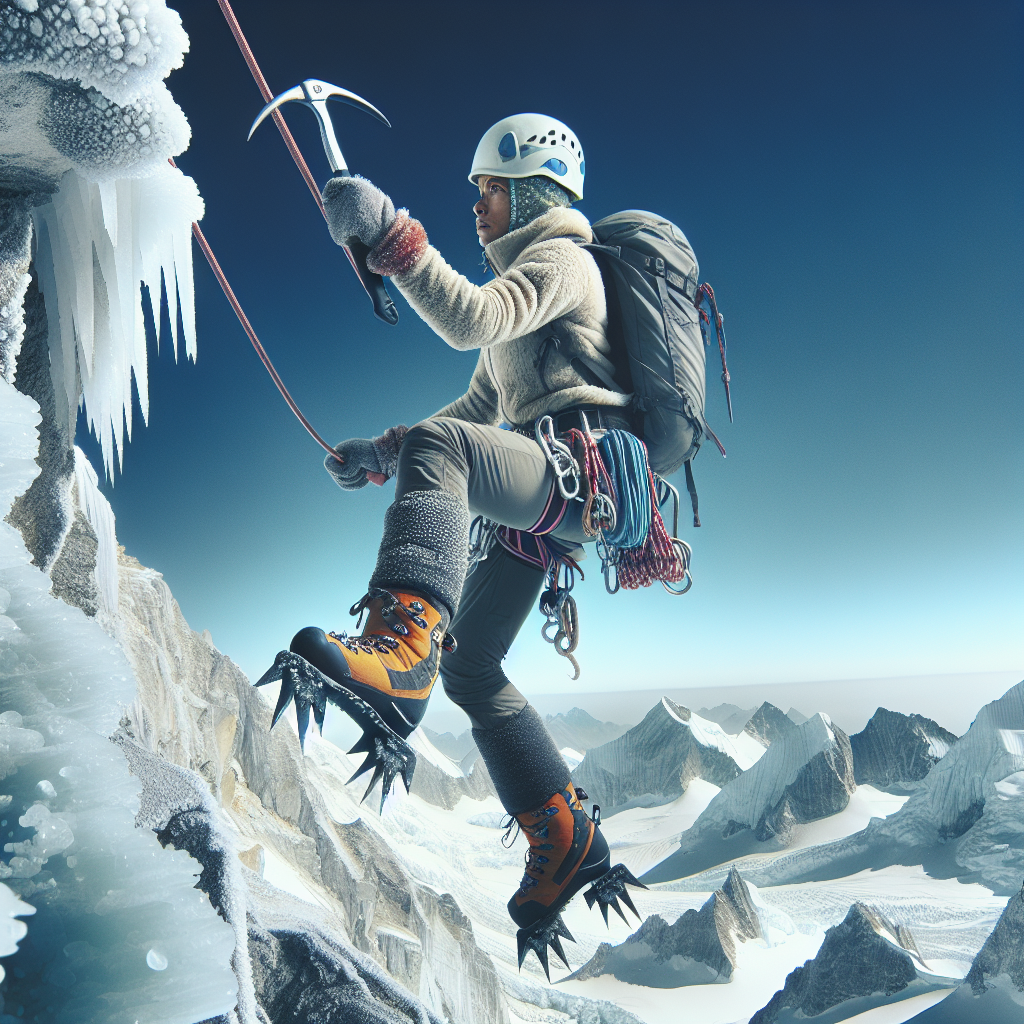Introduction
There’s a certain thrill that comes with winter climbing—the crisp air, the crunch of snow underfoot, and the challenge of ascending icy verticals. It’s an exhilarating way to experience the majesty of nature during its most peaceful season. But before you set out to conquer frost-laden peaks, understand that winter climbing requires more than just a sense of adventure. The right gear and a solid grasp of safety knowledge are critical to your success and survival. In this guide, we’ll walk you through what you need to know as a beginner to make your winter climbing experience both safe and unforgettable.
Understanding the Winter Climbing Environment
Winter climbing conditions can vary wildly—from serene, snowy landscapes to fierce storms with treacherous winds. Temperatures can plunge well below freezing, and daylight hours are shorter, making time management crucial. The risk of avalanches adds a layer of unpredictability that cannot be ignored. Therefore, familiarizing yourself with the risks and preparing accordingly is a vital first step. Knowing what Mother Nature has in store will help you respect the mountains and return from them safely.
Essential Winter Climbing Gear
Let’s break down the non-negotiable gear you’ll need for winter climbing:
- Climbing Hardware and Rope: Ice axes, screws, and ropes designed for icy conditions are a must. Look for dry-treated ropes that won’t absorb water and freeze.
- Insulation Clothing Layers: Layering is key. Start with moisture-wicking base layers, add insulating mid-layers, and top it off with a waterproof and windproof shell.
- Footwear: Sturdy mountaineering boots designed for cold weather are essential, paired with crampons for grip on ice.
- Protective Gear: Never climb without a helmet. Goggles will protect your eyes from glare and wind, while insulated gloves will keep your hands functional.
- Navigation Tools: A GPS device, map, and compass are your lifelines in the wilderness. Know how to use them.
Invest in quality gear and maintain it well. Your life may depend on it.
Physical Preparation and Skills Training
Winter climbing is demanding on the body. Building your strength, endurance, and flexibility through a regular workout routine will pay dividends on the mountain. Additionally, mastering basic climbing techniques like belaying, knot tying, and proper axe use is crucial before you attempt winter climbs. Consider indoor climbing gyms for practice and take advantage of outdoor training opportunities when possible.
Planning Your Climb
Planning is a pivotal part of a successful winter climb. Start with selecting beginner-friendly routes and always keep an eye on weather forecasts. Remember, conditions can change rapidly, so be prepared to adjust your plans. It’s also essential to have a plan for emergencies. Know how to signal for help and have a clear idea of what steps to take if an accident occurs.
Safety Tips for Winter Climbing
Staying safe on the mountain means being proactive about hazard prevention. Understand how to recognize and deal with hypothermia and frostbite. Educate yourself about avalanches—where they occur, how to predict them, and what to do if you’re caught in one. Always climb with a partner, follow safe climbing practices, and be cautious when navigating through snow and ice.
Emergency Protocols and First Aid
Basic first aid knowledge can be a lifesaver. Learn how to treat common injuries and illnesses that can occur in winter environments. Carry emergency communication tools like a satellite phone or a personal locator beacon, and know how to use them. In case of a serious emergency, don’t hesitate to call for professional help.
Environment and Ethical Considerations
Respect for the environment is paramount. Follow Leave No Trace principles to minimize your impact on the winter wilderness. Be mindful of wildlife and their habitats, and avoid causing unnecessary stress to them.
Winter Climbing Destinations for Beginners
There are many places where beginners can safely enjoy winter climbing. Destinations like the Scottish Highlands, the Sierra Nevada in California, or the French Alps offer routes that are suitable for those new to the sport. Each location presents its own set of challenges and rewards, so do your research and choose one that matches your skill level and interests.
Conclusion
We’ve covered a lot of ground in this guide—from gear to skills to safety protocols. Remember, the key to a successful winter climbing experience is respect for the mountain, thorough preparation, and an unyielding enthusiasm for the adventure. With the right mindset and the knowledge you’ve gained here, you’re well on your way to enjoying the wonders of winter climbing. Stay safe, and happy climbing!

